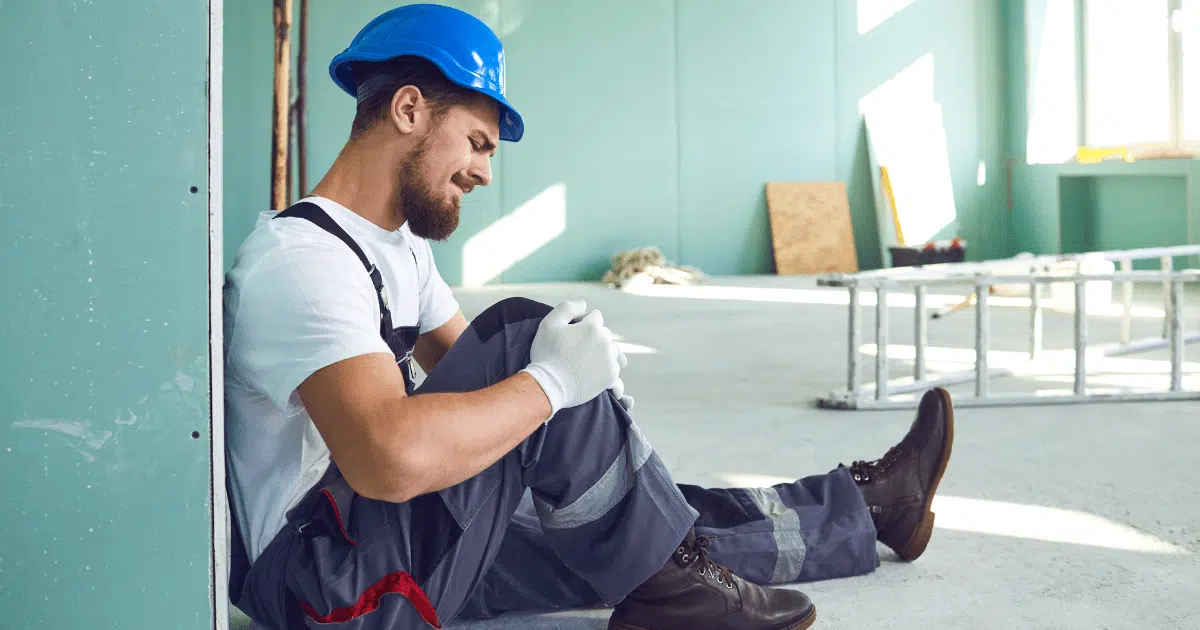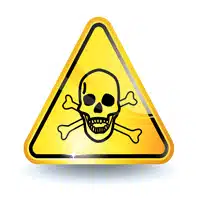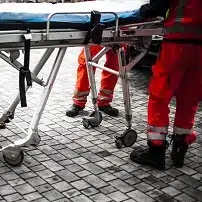Over 20 percent of all worker-related fatalities in the U.S. occur in the construction industry, according to the Occupational Safety and Health Administration (OSHA). In addition, construction workers frequently experience serious injuries on the job. Listed below are the most common workplace construction accidents and injuries.
Slip and Fall Injuries
Construction sites often include working on multi-story buildings. Workers may have to climb ladders or work on rooftops or scaffolding. They may fall in poorly marked trenches or elevator shafts. Dangers of falls increase when workplace lighting is poor. Falls cause over one-third of all reported construction site injuries.
Construction sites often have uneven terrain, and workers may temporarily store or place building materials, tools, and debris on the ground, creating slip and fall hazards. There can also be puddles from rain or water usage that add to the risk of falling on the job.
Injuries Caused by Debris
Construction workers are required to wear hard hats due to the frequency of debris falling from above. Even with this protection, workers often get injured from debris.
Getting Hit by Vehicles
Construction sites seldom have specified roads and traffic. Vehicles share the area with workers walking and working onsite. This increases the risk of getting hit by a vehicle. Many construction vehicles also have poor visibility compared to passenger cars.
Operators of front-end loaders or forklift trucks may not see pedestrians in front or behind them. Backup alarms on construction vehicles reduce the risk of hitting a pedestrian while in reverse.
Getting Crushed in a Trench
Excavation of trenches to lay cable and other utilities requires skill and careful precautions to prevent collapse. Inadequate trenching techniques can result in collapse on an employee. Many of these accidents are fatal.
Electrocution
Construction sites include the risk of electrocution from tools being used in wet areas or live wires during the installation and setup of electrical service to buildings and nearby structures, such as lighting for parking lots.
Equipment-Related Injuries
Equipment-related injuries are frequent on construction sites. Specialized equipment such as cranes are often used to move large heavy loads. Safe operation requires considerable skills and training to avoid mishaps. The OSHA has set standards for crane use to address the hazards.
Jackhammers are powerful tools used to break up concrete. They are heavy and risk repetitive motion disorders due to the intense vibration while in operation. Proper handling and use with adequate personal protective equipment is necessary to avoid injury.
Welding equipment uses high temperature heat and/or pressure to combine different metals or other materials to form a strong bond. There are a variety of types of welding, but many construction applications involve techniques that produce high temperatures and bright light.
Welders also must be specially trained and must wear protective gear, such as heat resistant gloves, aprons, and arm shields to protect against burns, and a properly tinted face shield to protect against burns to the face and eyes.
Other common equipment used on construction sites include power hand tools, such as nail guns, staple guns, as well as hammers, wrenches, and the like. Improper use can result in broken bones, contusions, and puncture wounds.
What if I Miss Work?
Workers’ Compensation is a no-fault insurance program in which most employers are required to participate. The program does not require proof of negligence on the part of employer before an employee can qualify for benefits. Also, if the employee was negligent and had some blame for the injury, they are not ordinarily disqualified from participation. The important thing to understand is that the injury must be reported to the employer at the time of injury.
Workers’ Compensation programs vary from state to state, and it is recommended that a seriously injured worker seek representation by a competent lawyer admitted to practice in the state in which the injury took place. They should be knowledgeable about the specific requirements and benefits of the state’s Workers’ Compensation program.
The program also provides coverage for reasonable medical expenses and other services, including medical diagnosis, treatment, and medications, hospital services, surgery, dental services, and more.
In Delaware, an injured worker may choose to visit their own health care provider for diagnosis and treatment of their work-related injuries. Some other states allow an employer to require the employee see one of their approved medical providers. However, in Delaware, if an employee does see their own doctor, then the employer is entitled to require the worker see an impartial doctor to confirm the treating physician’s diagnosis and treatment plan.
How Long Do Workers’ Compensation Benefits Last?
Workers’ Compensation insurance typically provides about two-thirds of average weekly wages for a period of time while the injured employee is out of work and recovering. Delaware sets minimum and maximum amounts each year.
There is also a difference in compensation for lost salary depending on whether the disability is partial or total. If a worker can return to work in a lesser earning capacity, they can receive compensation for partial disability benefits for a period of time. In this case, the amount to be paid is two-thirds of the difference between the average weekly wages before getting injured and the amount paid at the lesser earning job. The compensation will not be paid for more than 300 weeks.
Wilmington Workers’ Compensation Lawyers at Rhoades & Morrow Protect the Rights of Injured Construction Workers
Our experienced Wilmington Workers’ Compensation lawyers at Rhoades & Morrow have represented numerous injured construction workers. Call us at (302) 427-9500 or fill out our online form for a free consultation. Located in Wilmington, Bear, and Milford, Delaware, we serve clients throughout Middletown, Dover, Milford, Lewes, Rehoboth, Elsmere, and Seaford.





